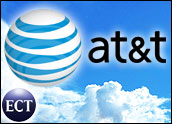
The new year brings another new AT&T, with the company having completed the largest merger in telecom industry history just before the page turned on 2007. Now the telecom giant is eyeing wireless and advertising across multiple platforms as the engines of future growth.
AT&T has long held that the prize of the BellSouth buy was the remaining ownership stake in Cingular Wireless, which AT&T now controls in full following its US$86 billion purchase of BellSouth.
While the earlier acquisition of AT&T by SBC Communications — which took on the name of its former parent company — was seen as a way to gain business customers and expertise, analysts say the BellSouth deal is all about wireless.
It also enables AT&T to become one of the first companies to offer a four-play bundle of services to customers, selling them both traditional and Voice over Internet Protocol (VoIP) calling, as well as high-speed Internet access, video service and wireless calling plans.
AT&T will soon roll out new bundles of services, including a plan that combines traditional landline calling with wireless phone service, The Wall Street Journal reported Tuesday. The company also has plans to make its various platforms more available to advertisers, offering them access to customers on mobile phones, on the Internet and on television.
AT&T may also expand the use of mobile phones equipped with WiFi technology,the WSJ speculated, which could enable more customers to replace their traditional lines with mobile phones.
That could be a good move for AT&T, since many mobile customers have larger monthly bills. The effort could also discourage customers from switching to lower-cost VoIP alternatives for home service.
Done Deal
The merger was approved late Friday by the Federal Communications Commission after a delay of nearly three months. AT&T broke the logjam by offering additional concessions, including expanded guarantees of network neutrality. It also promised to offer an affordable high-speed Internet-access option that will allow customers the freedom to take advantage of VoIP calling plans offered by competitors.
AT&T immediately moved to close the deal, announcing a new corporate structure that keeps CEO and Chairman Edward E. Whitacre Jr. in those roles, while BellSouth’s current Chairman and CEO Duane Ackerman will remain as chairman emeritus during the transitional period.
“We are ready to lead the way in a new era of integrated wireless services nationwide,” Whitacre said.
Integration of wireless, wireline and IP-based networks will be the first order of business after the merger, the company stated, along with combining customer service capabilities and lining up product offerings.
In the long term, AT&T believes the advertising revenue possibilities are significant; they could result in several billion dollars worth of new revenue annually within the next five years, noted the WSJ.
AT&T and BellSouth will begin a new advertising campaign in a matter of days, the companies stated, focusing on the new AT&T and the elimination of the “BellSouth” name. A second effort will focus on rolling out a co-branded Cingular nationwide; AT&T promised more details were to come on that branding effort. TheYellowPages.com site will not change, AT&T reported.
AT&T expects to see more than $2 billion per year in savings from the combination within two years, and as much as $3 billion by 2010.
Matter of Time
Some of the more ambitious parts of the AT&T plan will have to wait. The company is currently licensed to deliver video service in limited markets, though a recent FCC ruling meant to speed the local licensing process could help accelerate that push.
Even with that assistance, AT&T will face significant hurdles in adding video to its menu of services, giving cable companies such as Comcast more time to prepare for the inevitable face-off for bundled-services supremacy, JupiterResearch analyst Todd Chanko said.
“Deployment is much harder than the press releases make it out to be,” he commented.
Nevertheless, telecom analyst Jeff Kagan told the E-Commerce Times he expects 2007 to deliver increased industry competition.
“2006 was the year that redefined the industry with mergers,” he said. “2007 will change the industry on a competitive level. Telephone companies and cable television companies are gearing up to compete in the biggest all-or-nothing battle we have ever seen. It is shaping up to be one of the most fun to watch unfold.”




























































































Social Media
See all Social Media